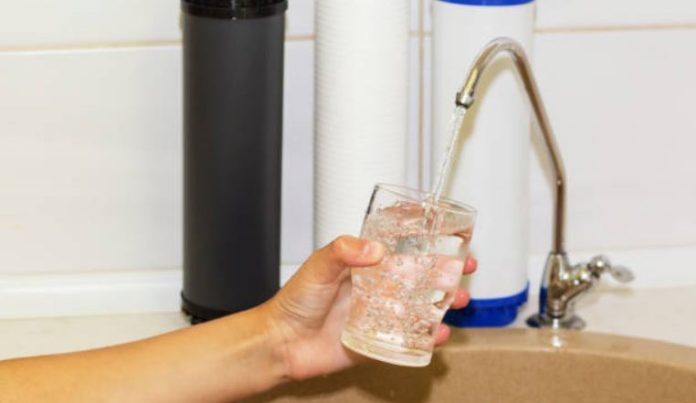Thirty years ago, most individuals in the United States received their drinking water directly from the tap, naively trusting in the safety and quality of that water.
Today, as new reports emerge each year about the harmful effects of chlorine and other contaminants in tap water, it has become a popular fad to invest in cleaner, more treated forms of water.
It is now becoming increasingly rare to find an individual who will fill a glass with tap water and indifferently drink it without considering the quality.
While bottled water companies have risen to the growing demand for quality drinking water and have provided a number of different products in varying levels of purity and safety, home treatment devices have also become an important addition to the water market.
Older treatment methods, like reverse osmosis and distillation, have experienced a renaissance of sorts, while newer methods of treatment, such as water filtration and ionization, have quickly grown and expanded.
In the paragraphs below, you can read and learn about how one of these new treatment methods, water filtration, works and how it affects the quality of your drinking water.
Water Filter Technology
Water filters come in a variety of different models and are used for many purposes. They may be used to provide clean drinking water at the kitchen tap or pure bathing water in the shower.
Water filters may also be attached to the water main for point-of-entry whole house water filtration.
Most water filters, however, regardless of where they are affixed or what their filtration purposes are, share some technological similarities.
Water filtration generally works by utilizing a combination of mechanical and chemical filtration processes.
Mechanical filtration is the process of physically blocking contaminants from passing over the filter media with the water.
It is generally used for the removal of large contaminants from water and is an older form of filtration that has been utilized by water utilities for municipal water treatment for hundreds of years.
In a chemical filtration process, the water filter uses a positively charged mineral media that exerts a powerful attractive force on drinking water contaminants.
The contaminants are encouraged to break their bonds with water molecules and to bond to the mineral media.
The advantage of chemical filtration over other water treatment processes is that very specific contaminants may be targeted for removal, while more healthful elements of water, such as natural trace minerals, can be left in for taste and pH balance.
Most water filters in the commercial market use a combination of the two treatment methods listed above.
Some water filters may also use further treatment methods to target specific contaminants or to broaden the purification of the water.
A few water filters will use an ion exchange process to remove heavy metals, such as lead and mercury, which may not be eradicated by either mechanical or chemical filtration.
The ion exchange process works in a similar manner to a water softener; in the process, an ion of potassium or other harmless material present in the filter media is exchanged for an ion of lead or mercury present in the water.
Other water filters may use an ionization process to further treat the water. In this case, water molecules are split into simple H and OH compounds.
While this water is more alkaline and easier to digest, scientists have yet to conclude that ionized water is, in fact, healthier for the body.
Features of a Water Filter
There are a number of different features that determine both the quality and performance of a water filter.
These features include the mineral make-up of the media, the amount of surface area in the media, the size of microns removed by the filter (also known as micron rating), and the regulated flow rate of the filter.
Mineral Media:
Water filters can be made from ceramic, charcoal, or carbon media, but carbon is quickly becoming the most popular choice, as it is inexpensive to produce and highly effective.
The two most common forms of carbon media are granulated carbon and activated carbon block. While both filters are effective, carbon block filters offer a larger amount of surface area and generally remove more contaminants.
Media Surface Area:
The media surface area of a filter refers to the amount of activated carbon that is exposed to water and contaminants.
One pound of carbon media offers approximately 125 acres of activated surface area. The greatest number of contaminants can be removed when the activated surface area is at its highest.
Micron rating:
The micron rating of a filter determines the size of particles that can be removed mechanically by the filter. Micron ratings range from 50 to .5, with the smallest micron ratings being the most effective.
A water contaminant that measures at .5 microns is approximately 40 times smaller than what could be seen with the naked eye.
Flow rate:
The performance of a water filter is also determined by the amount of time water is exposed to the filter media. This amount of time is generally calculated by the flow rate of the filter.
Different sizes of filters can process water at different rates of speed. While a relatively fast flow of water is ideal for adequate pressure, contaminants need a certain amount of time in the filter for proper exposure to the media.
Larger filters can handle more water and will have higher flow rates, while smaller filters must maintain slower flow rates for adequate exposure time.
Each of the above features, as well as the particular technology the filter uses, determines the number and degree of contaminants a filter can remove.
Based upon their specifications, water filters are ideal for removing chlorine and other chemical contaminants from drinking water while retaining trace minerals for better taste and pH balance. They have proven to be one of the best water treatment solutions for municipally treated water.
To learn more about water filtration or to view some water filter samples, visit the Aquasana Store.

